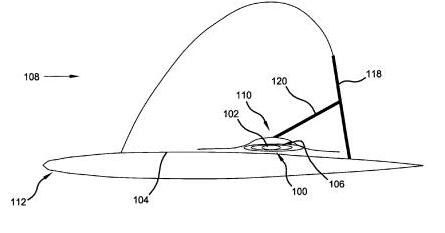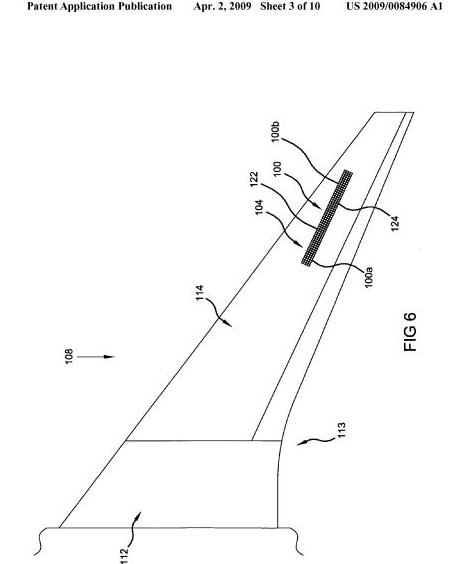Boeing is investigating the use of oscillating jets of air at certain locations on an aircraft wing to significantly reduce drag and consequently boost speed or fuel economy for high speed cruise, including transonic or supersonic regimes.
Analysis presented as supporting material for a US patent titled “Dynamic bumps for drag reduction at transonic-supersonic speeds” (application number 20090084906) shows overall mean drag reductions as high as 7.3% relative to a normally configured wing.
At transonic or higher speeds, air flowing over a swept wing is accelerated causing drag producing a “normal” shockwave that extends upward from the rear portions of the aerofoil. The “dynamic bumps” system proposes a grid of oscillating jets, some that suck air and some that expel air, to create a recirculation pattern with magnitude and frequency that acts to weaken the normal shock wave by creating an oblique wave that acts to reduce aerofoil drag.
The picture below, submitted by Boeing with the patent, shows the oblique wave ahead of the normal shock, with dynamic bumps in action on a cross section of a wing. Below that is a picture showing the typical location for a grid for the oscillating jets.
 ©Boeing
©Boeing
 ©Boeing
©Boeing
The practice of locally modifying wing shape to reduce the wave drag is not new as manufacturers have experimented with static bumps on a wing or other innovations. Research by Airbus, the German Aerospace Centre (DLR), and the French Aerospace Lab (Onera) presented in a 2004 report revealed that drag reductions as high as 2.9% could be achieved by locating “bumps” on the wing.
The researchers concluded that shock intensity could be reduced “for off-design conditions” and that fuel consumption “should be reduced on a typical long range mission.”
Boeing notes that the static physical bumps, while indeed reducing drag during certain design conditions, “at different but otherwise useful Mach number and angles of attack…can be shown to penalize the aerodynamic performance of the wing.”
Another competing technology, which involves a blowing jet located upstream of the normal shockwave can also reduce drag, but at the cost of reducing the lifting capability of the wing, says Boeing.
“There remains room in the art for improvement,” the airframer states in the patent application.
It’s not clear if Boeing had performed the research for its M0.98 Sonic Cruiser program, cancelled in late 2002, or if the company continues to have transonic or supersonic ambitions for future models.
Source: FlightGlobal.com























